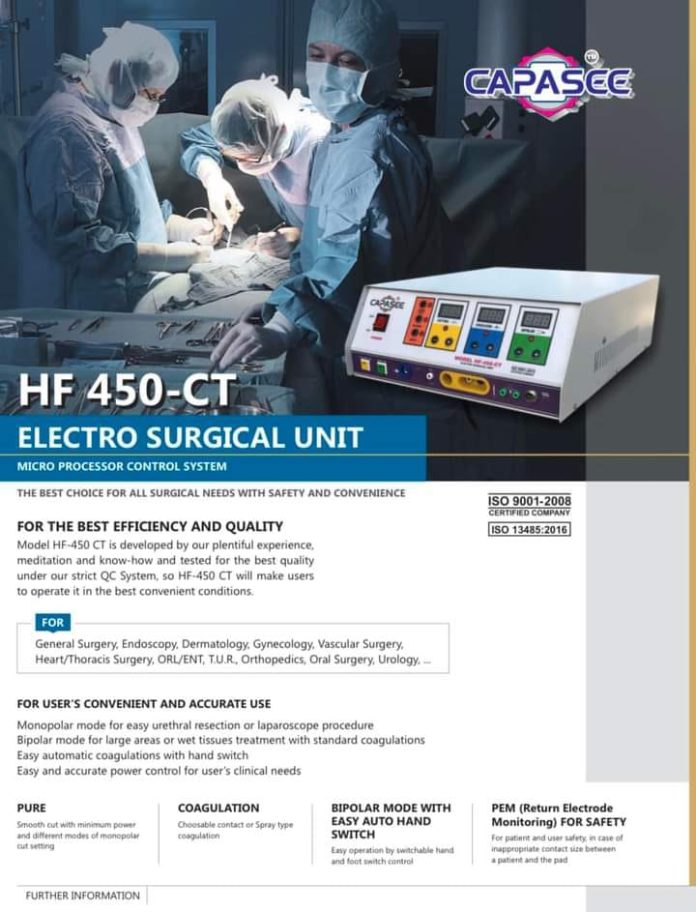The medical equipment manufacturing industry in Pakistan is on the cusp of transformation, driven by a combination of technological advancements, regulatory changes, and evolving market demands. As the healthcare sector continues to expand, the need for high-quality medical devices and equipment is growing. This article explores the emerging trends in medical equipment manufacturing in Pakistan, highlighting how the industry is adapting to these changes and what the future holds.
1. Technological Advancements
One of the most significant trends in medical equipment manufacturing is the integration of advanced technologies. The adoption of Industry 4.0 principles, including the Internet of Things (IoT), artificial intelligence (AI), and automation, is revolutionizing the way medical devices are produced and used.
IoT Integration: IoT technology enables devices to communicate and share data in real-time. For example, smart medical devices can monitor patient conditions and transmit data to healthcare providers, facilitating timely interventions. In Pakistan, there is a growing interest in developing IoT-enabled medical devices to enhance patient care and streamline operations.
AI and Machine Learning: AI algorithms are being used to improve diagnostic accuracy and personalize treatment plans. In medical equipment manufacturing, AI is employed to design and test devices more efficiently, predict failures, and optimize performance. Pakistani manufacturers are beginning to explore these technologies to stay competitive and meet global standards.
Automation and Robotics: Automation is improving precision and efficiency in manufacturing processes. Robotics are being used for tasks such as assembly, quality control, and packaging, reducing the risk of human error and increasing production speed. Pakistani companies are increasingly investing in automated systems to enhance their manufacturing capabilities.
2. Regulatory Changes and Quality Standards
Regulatory compliance and adherence to international quality standards are crucial for the success of medical equipment manufacturers. Pakistan has been making strides in aligning its regulations with global standards to ensure the safety and efficacy of medical devices.
Strengthening Regulations: The Pakistan Medical Devices Rules (PMDR) have been updated to streamline the approval process and ensure that medical devices meet international safety and quality standards. This regulatory framework is designed to facilitate the entry of high-quality devices into the market and protect patient safety.
ISO Certifications: Pakistani manufacturers are pursuing ISO certifications, such as ISO 13485 for quality management systems in medical devices. These certifications are essential for accessing international markets and gaining the trust of healthcare professionals and patients.
Local and International Partnerships: Collaborations with international organizations and regulatory bodies are helping Pakistani manufacturers stay abreast of global standards and practices. These partnerships also provide opportunities for knowledge exchange and technology transfer.
3. Focus on Local Production and Innovation
As the demand for medical equipment grows, there is a strong push towards increasing local production capabilities and fostering innovation within the country.
Local Manufacturing Initiatives: The Pakistani government is encouraging local production of medical devices to reduce reliance on imports and improve accessibility. Initiatives such as tax incentives, subsidies, and support for research and development are aimed at boosting domestic manufacturing capabilities.
Innovation Hubs and Startups: There is a burgeoning ecosystem of medical technology startups and innovation hubs in Pakistan. These entities are focused on developing novel medical devices and solutions tailored to local healthcare needs. By leveraging local expertise and resources, they are contributing to the advancement of the medical equipment sector.
Affordable Solutions: There is a growing emphasis on creating cost-effective medical devices that cater to the needs of the local population. Pakistani manufacturers are working on developing affordable solutions without compromising quality, making healthcare more accessible to a broader segment of the population.
4. Market Expansion and Export Opportunities
With improvements in quality and technological advancements, Pakistani medical equipment manufacturers are eyeing opportunities for market expansion and export.
Expanding Domestic Market: As the healthcare infrastructure in Pakistan expands, there is an increasing demand for medical equipment. Manufacturers are focusing on meeting the needs of hospitals, clinics, and diagnostic centers across the country.
Export Potential: Pakistani medical equipment manufacturers are exploring export opportunities to capitalize on the growing global demand for medical devices. By adhering to international quality standards and obtaining necessary certifications, Pakistani companies are positioning themselves as competitive players in the global market.
Regional Collaborations: There is potential for collaboration with neighboring countries and regional partners to enhance market reach. Regional trade agreements and partnerships can provide access to new markets and facilitate the exchange of technology and expertise.
5. Sustainability and Environmental Considerations
Sustainability is becoming an important consideration in the medical equipment manufacturing industry. Manufacturers in Pakistan are increasingly recognizing the need to minimize environmental impact and adopt sustainable practices.
Eco-Friendly Materials: The use of eco-friendly materials in the production of medical devices is gaining traction. Manufacturers are exploring alternatives to traditional materials that reduce environmental impact and enhance the recyclability of products.
Energy Efficiency: Incorporating energy-efficient technologies in manufacturing processes helps reduce carbon footprints. Pakistani manufacturers are investing in energy-efficient equipment and practices to align with global sustainability goals.
Waste Management: Proper waste management and recycling practices are being implemented to handle medical device waste responsibly. This includes the disposal of electronic waste and other materials in compliance with environmental regulations.
Conclusion
The medical equipment manufacturing industry in Pakistan is undergoing a dynamic transformation, driven by technological advancements, regulatory changes, and a focus on local production and innovation. As the industry evolves, Pakistani manufacturers are positioning themselves to meet both domestic and international demands, while also addressing sustainability challenges. By embracing these emerging trends, Pakistan’s medical equipment sector is set to play a significant role in the global healthcare landscape, contributing to improved patient outcomes and the advancement of medical technology.








